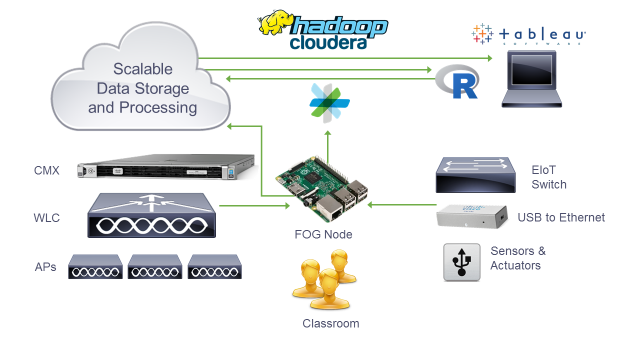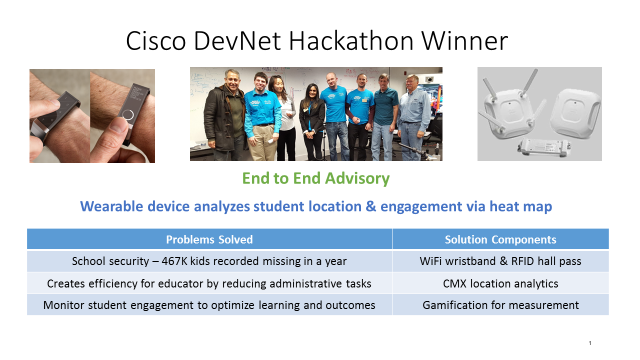 Recently I found myself planning a hackathon with my team and I realized I have never shared the science behind them. While I have planned innovation challenges and hackathons for years, I’ve never actually written about them. Well, that’s now about to change today.
Recently I found myself planning a hackathon with my team and I realized I have never shared the science behind them. While I have planned innovation challenges and hackathons for years, I’ve never actually written about them. Well, that’s now about to change today.
Why Run a Hackathon?
There are many reasons to run a hackathon, but in most cases it is to create a new innovation, solve a problem, create a new app or teach new skills to people with the potential to start a new business.
In this case, the hackathon was created to teach new skills to people preparing for future careers in the Internet of Things.
The learning and innovation skills utilized in a hackathon empower students to be prepared for problem solving technical, social and business challenges related to digitization. The following skills play an integral role toward student success in a hackathon:
- Creativity and Innovation
- Critical Thinking and Problem Solving
- Communication and Collaboration
Hackathons enable project-based learning and problem solving. Teams work collaboratively, hands-on, and around the clock to solve customer problems. The hackathons offer teams an opportunity to formulate a customer solution.
How to Kick Start a Successful Hackathon?
In most hackathons the start is always with design thinking. The teams start with empathy or the inspiration of solving an end user problem and the result is a new, innovation solutions. Here are the steps of design thinking that got us started:

In this case we were providing a set of required technologies and asked teams to create an Educational Sector solution utilizing IoT. This hackathon focused on Cisco IoT and IoE technologies as well as Big Data technologies including Cloudera Hadoop, Hive and Tableau. Some of the key success factors would be determined by the ability to address systems integration, effective collaboration and customer problem solving.
A challenge was provided to multi-disciplinary teams to analyze behavior of students in a classroom based on Cisco IoT infrastructure. A predefined base architecture was provided as well as a structured flow of tasks to complete.
Architectural Design

Technologies Utilized:
- Cisco Technologies: CMX, EIoT and Spark API
- Cloudera – Hadoop
- Tableau – Connected dataset Hadoop/Hive
- Raspberry Pi as Fog Node utilizing Cisco Chestnut
- Android mobile phone
One of the most important steps in creating the framework for a hackathon is to effectively plan and structure the challenge. By setting a pre-defined set of judging criteria, teams are provided with guidelines and goals to achieve. The following criteria was developed for the jury to utilize in judging team solutions.
Judging Criteria:
- IoE Hackathon Map for H2
- Creativity and originality
- Potential social impact of the solution
- Business opportunity
- Quality of the presentation
- Quality of the prototype
- Use of collaboration tools and collaboration inside of the team
- Educational industry concepts and methodologies
In this case, the resulting business solutions were pretty similar across teams since they were all asked to utilize the same target solution, technologies and business sector. The following entry was the team that took first place in the hackathon challenge.
Lessons Learned from the Hackathon:
- Hackathons are a replicable, scalable, and engaging way to do project based learning and stimulate creative thinking
- Including a pre-defined technology stack and architecture paired with technical mentoring still produced original ideas and differentiation across solutions
- The combination of IoT connectivity, analyst number crunching skills, and business analyst visualization skills produces relevant, interesting, and challenging solutions to global problems.
- The importance of investing time and training to prepare teams in delivering successful pitches that impressed the jury members
Conclusion
Hackathons are a great way to engage teams in intensive, project-based learning. They provide an opportunity to bring together many of the target skills. Teams thrive learning in a condensed timeframe and utilize many key technologies to solve customer problems. The rapid requirements of formulating a solution also requires teams to utilize all team members and effectively collaborate to achieve their goal. In this hackathon, the winning team brought together hardware, software, and analytics to solve real-life problems. This experience further informs us of the effectiveness of acquiring important skills through project based learning.
